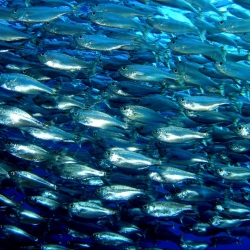
North American freshwater fishes are going extinct at an alarming rate compared with other species, according to an article in the September issue of BioScience. The rate of extinctions increased noticeably after 1950, although it has leveled off in the past decade. The number of extinct species has grown by 25 percent since 1989.
The article, by Noel M. Burkhead of the US Geological Survey, examines North American freshwater fish extinctions from the end of the 19th Century to 2010, when there were 1213 species in the continent, or about 9 percent of the Earth’s freshwater fish diversity. At least 57 North American species and subspecies, and 3 unique populations, have gone extinct since 1898, about 3.2 percent of the total. Freshwater species generally are known to suffer higher rates of extinction than terrestrial vertebrates.
Extinctions in fishes are mostly caused by loss of habitat and the introduction of nonindigenous species. In North America, there are more freshwater fish species in a typical drainage to the east of the Great Continental Divide than to the west, where a greater proportion of species have gone extinct or are found nowhere else.
